Comprehensive Guide to Understanding and Treating Corns
Corns are thickened layers of skin that form to protect the skin from friction and pressure. They commonly appear on the feet and toes, presenting as circular or cone-shaped hard areas. Understanding the nature of corns and adopting effective treatment methods is essential for relief and prevention.
What Causes Corns?
Corns, essentially skin’s response to repeated friction and pressure, occur due to a variety of factors that disrupt the natural balance and protective mechanisms of foot skin. Understanding these causes is essential for both effective treatment and prevention. Here’s a closer look at the multifaceted causes of corns:
Footwear-Related Causes
- Ill-Fitting Shoes: Shoes that are too tight or too loose can create constant friction or pressure points on specific areas of the foot, such as the toes or sides of the foot, leading to corn formation.
- High Heels: Frequently wearing high heels increases pressure on the forefoot and toes, significantly raising the risk of corn development on the balls of the feet or between the toes.
- Lack of Padding: Footwear lacking in sufficient cushioning fails to absorb impact and distribute pressure evenly, making certain areas more prone to developing corns.
Biomechanical Factors
- Toe Deformities: Conditions like hammertoes or claw toes cause abnormal bending of the toes, which results in abnormal friction and pressure distribution, fostering corn formation.
- Flat Feet or High Arches: These structural foot conditions alter the way weight is distributed across the foot, potentially increasing pressure in certain areas and contributing to corn development.
- Gait Abnormalities: An irregular walking pattern can place undue stress on specific parts of the foot, leading to concentrated areas of friction and pressure.
External Pressure and Friction
- Manual Labor: Occupations or activities that involve kneeling, climbing, or using foot-operated machinery can expose certain areas of the foot to repeated pressure or friction.
- Athletic Activities: Certain sports or physical activities, especially those involving repetitive foot movements or pressure on the feet, can contribute to corn formation due to increased friction and pressure.
Skin Conditions
- Dry Skin: Lack of moisture can make the skin less pliable and more susceptible to damage from friction and pressure, creating an ideal environment for corn development.
- Scar Tissue: Previous injuries or surgeries that leave scar tissue can create areas of uneven skin surface, prone to friction and resulting in corns.
Environmental Factors
- Walking Barefoot: Frequently walking barefoot, especially on hard or uneven surfaces, exposes the foot to direct friction and pressure, increasing the risk of corns.
Differentiating Corns from Calluses
While both corns and calluses are protective responses to friction, corns are typically smaller, raised, and can be painful, particularly when pressed. Calluses, on the other hand, are larger, flatter, and usually not painful.
Effective Treatments for Corns
Salicylic Acid Applications: The most common treatment involves using salicylic acid to dissolve the keratin that makes up the corn. Available over-the-counter in various forms, such as pads, drops, or creams, this method should be used with caution. Diabetics or those with poor circulation should avoid salicylic acid and consult a healthcare provider instead.
Orthotic Inserts: Custom-fitted orthotic inserts, prescribed by a podiatrist, can correct the foot mechanics that lead to corn formation. By adjusting how the foot fits and moves inside the shoe, orthotics can reduce friction and pressure points.
Professional Care: Attempting to shave off corns at home can increase the risk of infection. For persistent or painful corns, professional care from a podiatrist is recommended. They can safely remove corns and provide advice on preventing recurrence.
Surgical Intervention: In rare cases, surgery may be necessary to address the underlying structural issues causing corns, such as abnormal bone growth. This approach aims to reduce pressure points by correcting the foot’s structure.
Prevention Strategies
Proper Footwear: Wearing shoes that fit well and provide adequate room for the toes is the first line of defense against corns. Avoid high heels or narrow shoes that can compress areas of the foot.
Use Protective Pads: Over-the-counter protective pads can cushion areas prone to corns, reducing pressure and friction.
Cushioned Insoles: Insoles can distribute pressure more evenly across the foot, lessening the risk of corn development.
Regular Foot Care: Keeping feet clean, moisturized, and free from excessive pressure points can help prevent the formation of corns.
Conclusion
Corns, while common, can cause discomfort and pain if left untreated. Understanding their causes and adopting a proactive approach to treatment and prevention can lead to significant relief. For those with recurrent or painful corns, or individuals with diabetes, seeking professional advice from a podiatrist is crucial. With proper care, most people can achieve corn-free feet, enhancing comfort and overall foot health.

